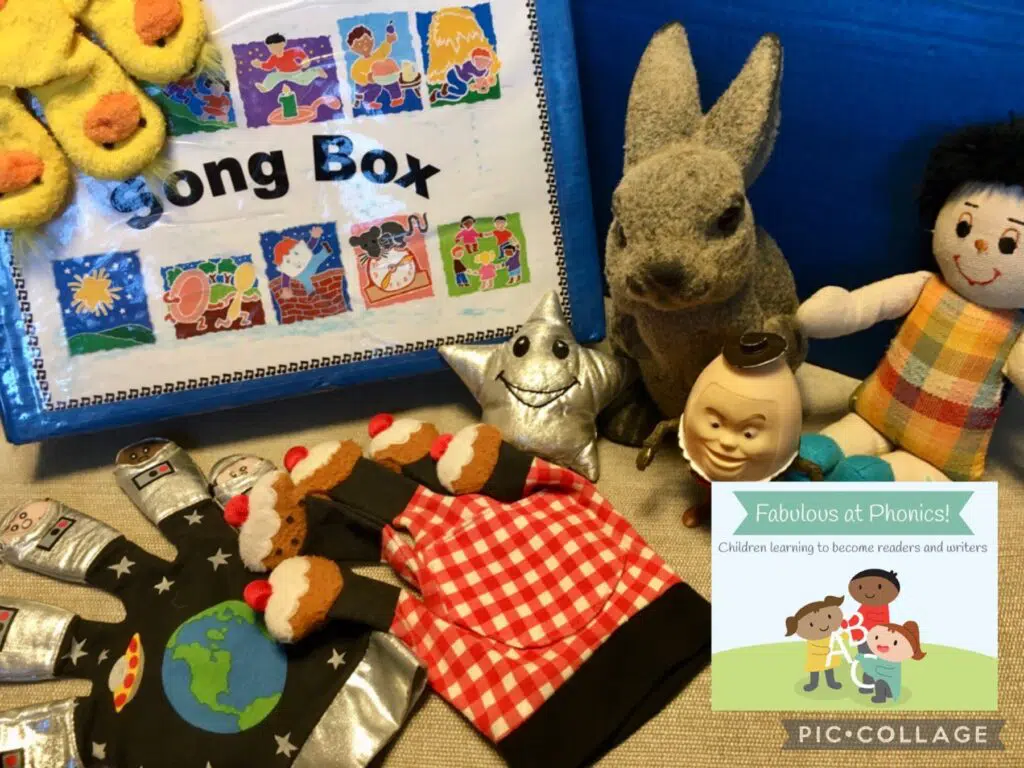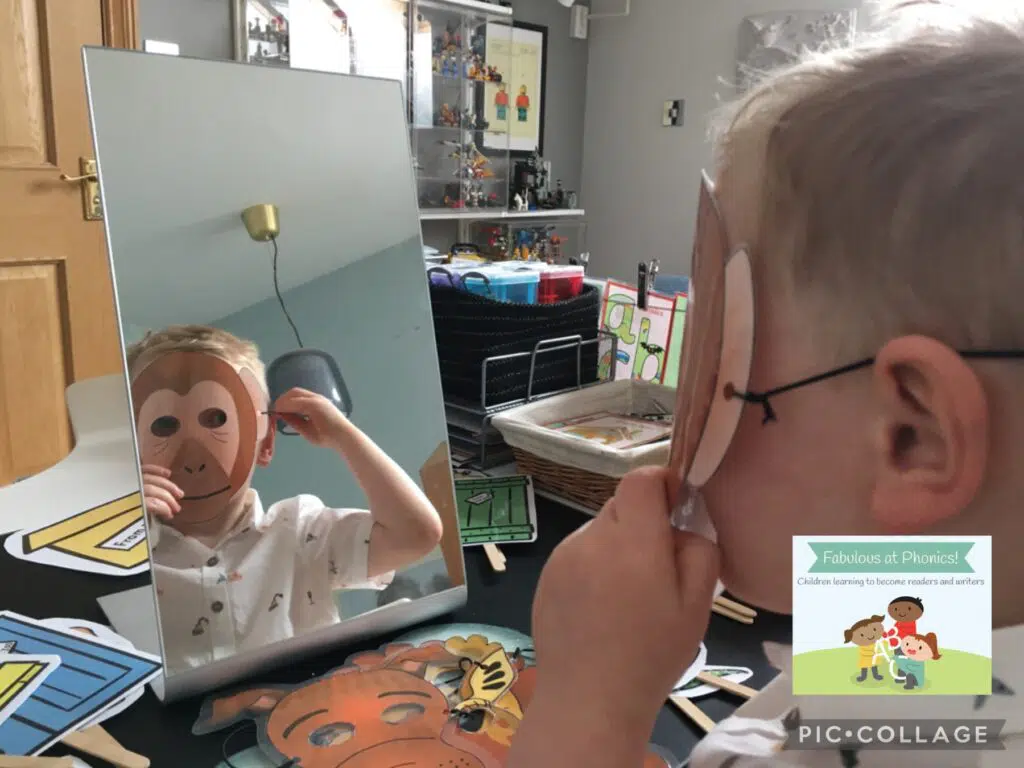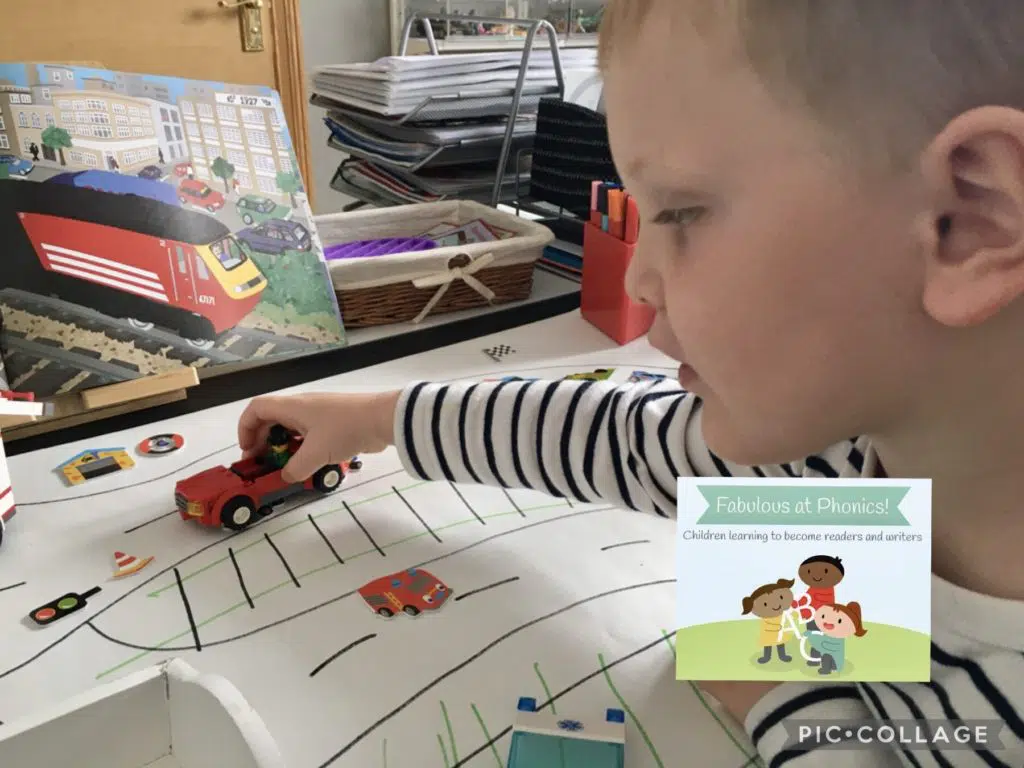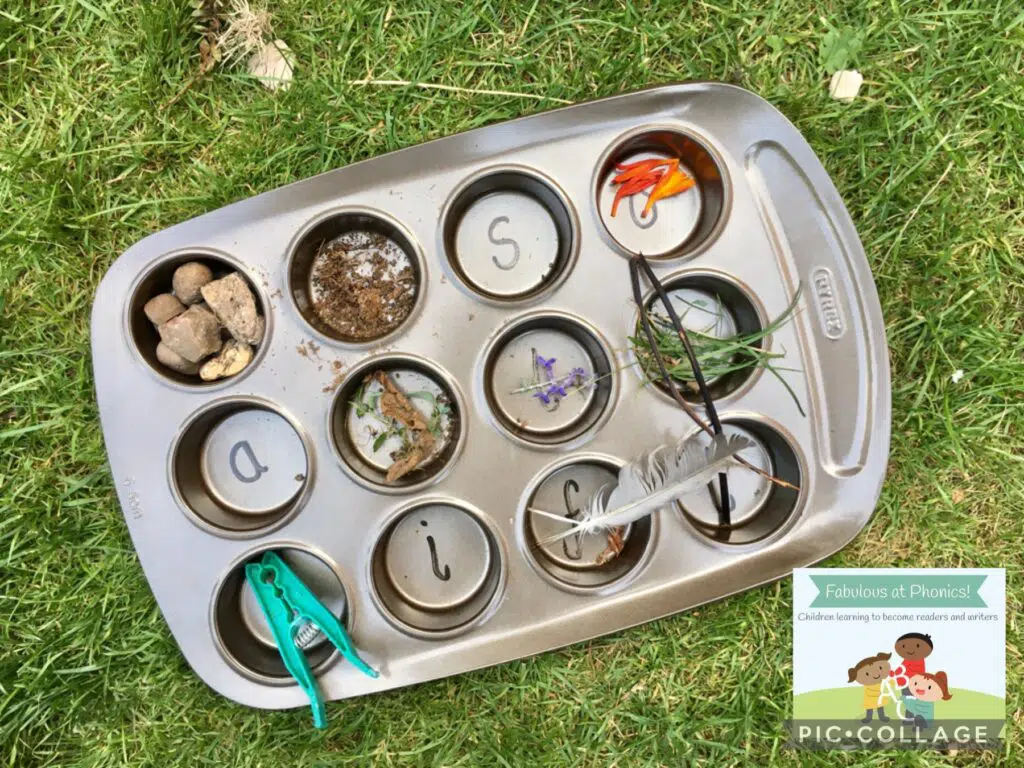Phase 1 is for life, not just for preschool!
It could be argued that the skills being developed in Phase 1 of ‘Letters and Sounds’ actually begin pre-birth. How powerful is that?
Midwives and health professionals strongly advocate ‘talking’ to ‘bumps’ and send a powerful message to parents, family, and friends about the benefits of hearing voices, melodic rhythms, and environmental sounds.
Research shows that talking to your bump in the third trimester of pregnancy has been proved to have a calming effect on your baby but incredible new research also shows that unborn babies can remember what they hear and can be soothed by repeated rhymes. (Source)
It follows on than just how beneficial high-quality Phase 1 phonics activities can be, not only for children in preschool- which may be the traditional view- but before this and beyond.
In fact, the skills that underpin these activities can support children to become better ‘listeners’, take notice of their surroundings, and become more confident speakers.
There is a solid argument, therefore, that Phase 1 activities should continue and run alongside the other phases into the Reception year and beyond.
They give practitioners and children opportunities to be creative, inspired ‘in the moment’, make connections and develop ‘deep’ learning. This is, arguably, in contrast to the more prescriptive, ‘formal’ teaching that is often associated with phases 2-6.
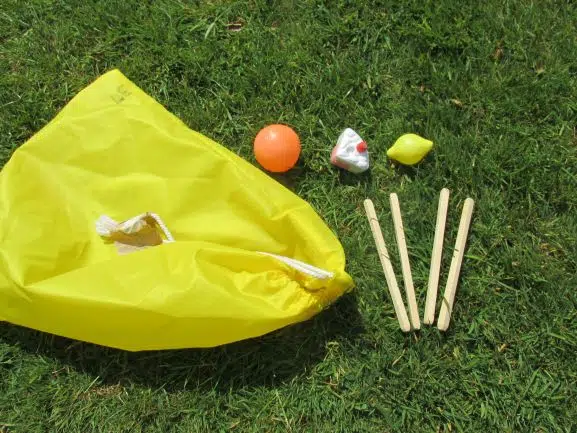
Letters and Sounds and the new validation process
Letters and Sounds was published in April 2007 and since then Phase 1 activities have been widely adopted by schools, childminders, those working in private, voluntary, and independent settings, and other early years provisions.
However, times change and non-more so quickly than in education! If we are to take a more skills-based, play centred approach and holistic view of learning and assessment have activities like ‘Roly Poly’ and ‘Silly Soup’ reached the end of their shelf life after over 15 years?
Well… the DfE has had a rethink about this too and is currently undergoing an overhaul of its validated systematic synthetic phonic program providers. (Source)
This means that schools need to show good progress and outcomes for all children on their reading journeys and how their phonics program and resources support this.
It will be interesting to see, when the newly validated list is completed, how many of these organizations pay attention to Phase 1 skills and offer support and pedagogy in developing the way for children to make a good start in reading and writing and speaking and listening.
Skills first… then activity
You may have noticed how often I’ve used the word ‘skills’ so far in this blog (at least four times already!).
This isn’t because I don’t have a thesaurus to hand or that I tend to repeat myself in writing! Rather, this is for emphasis and what we need to focus on.
It could be argued that these skills can then be delivered to children anywhere, at any time: through play, through purposeful interactions, and when children are at their most engaged.
Look, listen and note
One of the best things (in my opinion) about the Letters and Sounds Phase 1 document are the ‘look, listen and note’ sections. For example, these skills relate to Aspect 2- instrumental sounds (Listening and remembering sounds):

Historically, we may have been tempted to overlook these and get straight to the activities: setting up a group activity; bringing groups of children to the carpet and delivering a prescriptive activity as outlined in the publication; ticking off which children have completed the activity; moving on and forgetting about it until the next timetabled phonics slot the following day.
However, if we familiarise ourselves more with the look, listen and note suggestions, activities can be delivered within a much bigger context and through a wider variety of child-initiated interactions which hook into their interests and play.
The following suggestions are underpinned by this approach
Songs and rhymes
1. Song box
2. Daily routines
3. Rhyme of the week
4. Rhyme time
Stories
5. Jump in
6. Story sounds
Roleplay
7. Syllable shopping
8. Sound shopping
9. Home corner
Small World
10. Language has layers!
11. Sorting sounds
Outdoors
12. Physical syllables
13. Sound talk games
14. Scavenger hunt
15. Throw a rhyme
Songs and rhymes
Singing is good for your mind, body, and spirit. It helps to nurture imagination and language skills: the patterns of traditional nursery rhymes follow the rhythm of the spoken language, which stimulates children’s phonological awareness and songs let you practice new vocabulary and introduce the concept of rhyme.
You are also exercising your memory by recalling lyrics. Group singing lifts your spirits and develops a sense of community and teamwork.
It’s physically good for you too: it releases endorphins and can improve your posture and breathing.
With all these benefits we should be singing with our children every day!
1. Song Box
To get you started why not make a song box?
Choose your box and fill it with props that link to your favorite songs. (You’re bound to have some around the setting already but keep an eye out for them in charity shops too).
Then take it in turns to pick something out – and sing about it! Listening and attention can be enhanced through these props, enabling a child to keep their concentration and focus on something visual whilst listening to instructions.
Understanding skills are also enhanced, allowing children the time they need to process what they are being asked to do.
Being allowed to make decisions and having control over learning also help to raise a child’s self-esteem and confidence, as well as supporting behavior through turn-taking and positive praise.
Leave the song box where the children can play with them and sing the songs for themselves, role-play and act out their experiences.
2. Daily Routines
Why not source rhymes to accompany daily routines?
The familiarity of a ‘hello’ song to start a session and a ‘goodbye’ song before home time can really help to settle a child and become part of their familiar routine.
Songs that include children’s names also help to create a sense of identity and develop peer relationships.
Moreover, include actions too so those quieter children can still join in and choose lyrics that support some reflection from children on how they are feeling and why.
Try singing familiar rhymes in a range of different ways: can children use a low voice, a quiet voice, a fast voice, or a slow voice, and so on?
Ask the children how they would like to sing a verse. Songs and rhymes aren’t only limited to the beginning and the end of the day; there are others you can sing to add rhyme into a routine.
Washing hands, snack time, tidy up time, playing and outside weather are all opportunities for children to join in words and actions to familiar songs in a less forced way.
3. Rhyme of the week
A rhyme of the week will also help children to build up a stock of rhymes through hearing them repeated again and again.
These could be chosen to support children’s interests, themes, vocabulary, seasons, and celebrations…
These would also be a great opportunity to include parents: display the details on your notice board, newsletter, electronic messages, website, or the ways that you communicate with parents and carers.
You could send a YouTube video link or an image of the lyrics, even a video of a practitioner demonstrating the rhyme (if you have anyone feeling ‘brave’!).
Could parents contribute to your ‘rhyme’ list- an opportunity to build ‘cultural capital’ and bring other cultures and languages into the setting- and maybe ask them to vote each week from a selection?
Ideally, children will hear many of the same rhymes at home, thus, empowering parents to support their child’s learning and showcasing the value your setting places on early reading.
4. Rhyme Time
Yes, it might remind you of an early morning wakeup call but signalling a ‘rhyme time’ using an alarm clock sounding at different intervals through the day can really support children’s listening and self-regulation.
If you have ‘hot spots’ of low-level play during sessions, a rhyme might be a really useful way to scaffold a stop to continuous provision and a purposeful time to reflect and regroup.
Make sure everyone is aware of the rhyme: this could tie in with your rhyme of the week or a child ‘helper’ could pick a song out of a bag or your song box.
Children will love listening out for the alarm and knowing what it means when it goes off.
Stories
Stories can also provide a wealth of rhyming opportunities.
Not only this but use stories and storytimes as an opportunity for children to develop a plethora of phase 1 phonics skills.
Encourage a love of reading and books and decide on and create a ‘canon’ of books in your provision that you return to. Make sure these are books that you love to read- if you enjoy them, it’s more than likely that the children will too.
When you love a book, children will want to hear it over and over again; children thrive on repetition which hardwires their brains for success.
Plan story readings and use the language created by the author to support your teaching and learning (after all they have probably spent a lot of time and thought on choosing the words to use, creating a structure and characters etc.).
‘Practice makes perfect’ and remember to read with pace and expression.
5. Jump In
Read stories the first time without stopping too much. Once children become familiar with the text, you could try getting them to ‘jump in’ at key points in the story.
Stop and ‘dip’ your hands forward to signal to the children to say the next word.
This activity could be used to develop lots of skills such as jumping in with an impending rhyme, animal noise, high tier vocabulary words, a word of interest to the children, a character voice, or focus words.
6. Story Sounds
Children can ‘jump in’ to stories not only with missing words but musical instruments, body percussion, and voice sounds.
Music and sound are at the heart of Phase 1 phonics and ‘story sounds’ are just one way to provide some purposeful, high-level challenge, low threat participation.
Can children listen for a target word or character and respond with an appropriate associated sound?
Use quiet and loud sounds to recreate action, tap out rhythms in words and use sounds to represent a story character?
Encourage children to suggest their own ideas, copy your sounds and actions and talk about the sounds they hear and make.
Role play
The most successful role-play occurs when children are given the opportunity to act out familiar experiences.
Home corners, shops, and small world areas are great ways to develop language and for children to make sense of the world around them.
We can also use these areas to scaffold children’s play and set up provocations and interactions to support children with Phase 1 phonics skills.
7. Syllable Shopping
By far one of the most successful areas of continuous provision with regards to child engagement and language opportunities, in my experience, has been a role play supermarket.
Even if you lack space for something on a large scale, a small corner with a table, till, and shopping bags would suffice. Enhance with ‘real’ food packaging which provides children with the opportunity to identify print in the environment around them.
Encourage the children to go ‘syllable shopping’ and provide shopping bags with numbers 1, 2, or 3 written on them.
Can they process food through the till by scanning items- a bleep for each syllable- and packing them into the associated number shopping bag for the number of syllables? For example, ‘cheese’ into bag 1, ‘biscuits’ into bag 2, and ‘banana’ into bag 3.
8. Sound Shopping
Children could also try ‘shopping for initial sounds’.
Each time a child visits the shop say that they can only buy items that start with the same sound (bananas, biscuits, bread). As they pay for the items emphasise the initial sounds.
9. Home Corner
Have your book area next to the home corner and merge the two so it looks like a lounge, with a couch and uplighter.
Include rhyming books, children’s favourite books, catalogues and magazines.
In the ‘kitchen’ include recipe books, have a whiteboard on the fridge, a calendar on the wall, a diary and shopping lists.
Provide puppets to encourage children to share and act out the rhymes they know with their toy ‘family and friends’ such as dolls and soft toys.
These will all help children engage emotionally with resources as part of the home corner experience, develop reading ‘behaviours’ and provide writing opportunities that are meaningful.
Small world
Small world play provides a wide range of opportunities across all areas of the curriculum including Phase 1 phonics.
Why not mirror children’s play when they are using small world resources?
Starting with child-centred interactions promotes independent play and, by copying their actions or words, they can tell that you are interested in their play and them!
10. Language Has Layers
Add ‘layers of language’ to what children are doing.
This way new words will be added to their vocabulary.
Emphasise words and add noises that the resources make in ‘real’ life, describe them, and see if children can guess which resource it is.
Can children replicate or demonstrate some of these noises and describe what they can see?
11. Sorting Sounds
Play games that involve sorting and categorising objects by their initial sounds.
Farmyard animals could have stables (made simply from cardboard boxes) where they go to rest based on their initial sound.
Use these opportunities to make up descriptive alliterative noun phrases too such as ‘pink pig’, ‘happy hen’. Extend this further and name the animals to make up tongue twisters e.g. (Penny pink pig, Hannah happy hen).
Outdoors
Many, if not all, of the Phase 1 phonics skills can be supported through outdoor play.
However, the intention isn’t to replicate the learning taking place indoors but rather to develop these on a bigger, messier, and more physical scale.
12. Physical Syllables
Investigating the number of syllables in a word can be done through ‘physical syllables’ using movements like jumps, hops, squats etc.
Add an extra dimension by incorporating a sensory experience such as puddles, snow, shadows, sand, and so on. You could invite the children to pick a picture card then jump the number of times according to the number of syllables the word has.
13. Sound Talk Games
Instructions for movement could be given by segmenting (‘sounding out’) action words for children to blend the sounds together in a sound talk game.
Further fun and engagement can be added to this type of activity by using a puppet that can only speak in sounds. This is an effective way to support children to orally blend: a key skill to master.
Say the word in sounds, for example, ‘Sammy the puppet wants you to h-o-p’. Pause to see if they can blend and hop. Say ‘h-o-p, hop’.
Ask children to repeat. Remember to segment single syllabic words and put these at the end of your sentence so that this is the last thing children hear which supports blending the sounds together.
14. Scavenger Hunts
‘Scavenger hunts’ can also work well outdoors using natural resources to find objects that begin with certain sounds.
Scaffold these activities by providing buckets, paper bags, egg cartons, or muffin trays as places where children can store their ‘treasures’.
Posting is a strong schema in young children, and they will also be encouraged to find objects if it involves posting them into a box, perhaps themed as a monster or a robot, or a red post box.
You can empty it too and double-check which sounds the objects begin with.
15. Throw A Rhyme
Enjoying rhyming activities and being able to continue a rhyming string are key objectives within the Early Years curriculum.
Why not try writing words on a ball, reading the word to the children (or sounding it out- depending on their next steps) who then attempt to throw it into the basket which is labelled with a picture of a word which rhymes.
Once they have thrown all the balls read through all the words in each basket and see if you can think of another one to add (continue a rhyming string).
Be creative and enjoy!
Hopefully, these ideas have given you a starting point for how you can bring Phase 1 phonics skills into your everyday practice and children’s play.
Remember to use your observations and assessment to determine children’s next steps and familiarise yourself with the look, note, listen sections of Letters and Sounds. These will support your interactions with children and inform enhancements within your learning environment.
Above all, enjoy the autonomy of Phase 1 which, at times can make it seem like the most difficult phase, but arguably the most creative and enjoyable.

